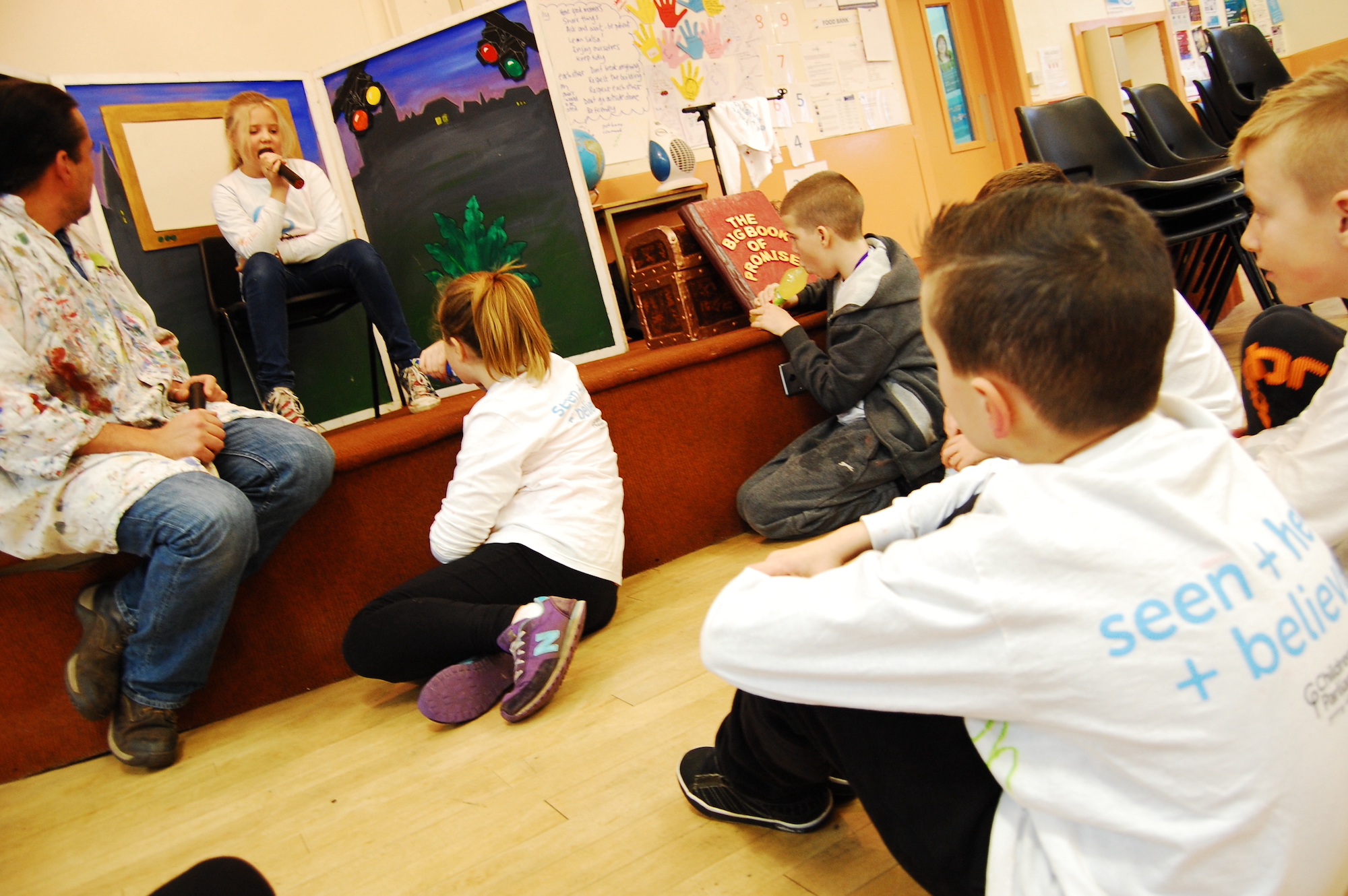
Hot Seat
When children feel confident in their abilities and aspirations, they are more likely to engage positively in their learning and school experience. In this activity, children are invited to imagine and ‘become’ their future self – someone who is successful, confident and ready to be in the Hot Seat.

Links to Curriculum for Excellence Experiences and Outcomes
- I make full use of and value the opportunities I am given to improve and manage my learning and, in turn, I can help to encourage learning and confidence in others. HWB 1-11a/HWB 2-11a /HWB 3-11a
- Representing my class, school and/or wider community encourages my selfworth and confidence and allows me to contribute to and participate in society. HWB 1-12a/HWB 2-12a /HWB 3-12a
Learning Intentions
- Learners describe and discuss their aspirations for the future.
- Learners encourage the growth of self-worth and confidence in others.
Duration
5-10 minutes for each child. It can work well with 4-5 children everyday over the
course of a week.
What You Need
- Toy microphone (or something to represent this)
- Large sheet of colourful fabric for a mock TV studio backdrop
- Two chairs
If you have the time and resources, it is a great idea to create a few additional simple, but effective, props such as “applaud!”, “cheer!” and “clap!” signs to create a fun, playful atmosphere. It can help everyone feel involved as part of the ‘live audience’.
In the days leading up to this activity, ask children if they have ever thought about what they would like to do as a job when they are adults, for example, in 10 years’ time. Introduce the Hot Seat activity (see below), and explain to the children that you would like them to have a think about the kind of job they would like to do, and why. This is so all children feel prepared when it is their turn in the Hot Seat.
Activity
Set up a TV studio, using the fabric backdrop and two chairs for the interviewee and interviewer facing a ‘live audience’ (the rest of the children).
Taking on the role of the interviewer, invite one child to join you ‘on stage’ in the hot seat. Introduce them to the audience as the child in 10 years’ time. For example, “Welcome to the Hot Seat! This is Sean and he’s a nurse in a busy city hospital. We’re lucky to have Sean here with us today and I’m sure you all can’t wait to hear all about Sean’s life and job.”
Encourage applause, claps and cheers from the other children Invite the children to ask questions to the child in the Hot Seat about their chosen job and future life. You will usually need to ask one or two questions to get the ball rolling. For example:
- How long have you been a (job/role/profession)?
- What was your inspiration?
- How long did you have to train?
- What is the best thing about your job?
- What do you like to do in your spare time?
Encourage the children to take time to think about questions that they want to ask and answers they want to give. It’s important to keep the pace and energy up – this should be a fairly fast paced, light-hearted way to support children to bring to life the ideas they have for their futures. Make sure to ask children to repeat anything that is too quiet, rushed or mumbled as this will help to build confidence.
Next, explain to the children that they will draw or write responses to each of the prompt questions in the four sections of the frame. Before they begin, take time to explain the significance of prompts in this order:
- People who are important to me. Explain that this helps us to remember the adults and friends who support our learning.
- Things I have learned in my life. Explain that this helps us to remember that learning happens from the moment we are born and in all parts of our life – not just school. Sometimes, this is without us even realising!
- Things I like to do. Explain that our favourite things and activities are all types of learning and that we often get better at something when we love it. Encourage children to think about the skills they have learned from activities they do at in or outside of school.
- Things I would like to learn. Explain that it is important to have ‘aspirations’ – dreams that we would like to aim for. This helps us to stay curious and motivated to achieve our goals.
You may like to use this activity as a way of opening up conversations with children about their experiences of learning from home – what they learned and enjoyed, as well as post-lockdown aspirations.

Click the button for a printable activity plan.